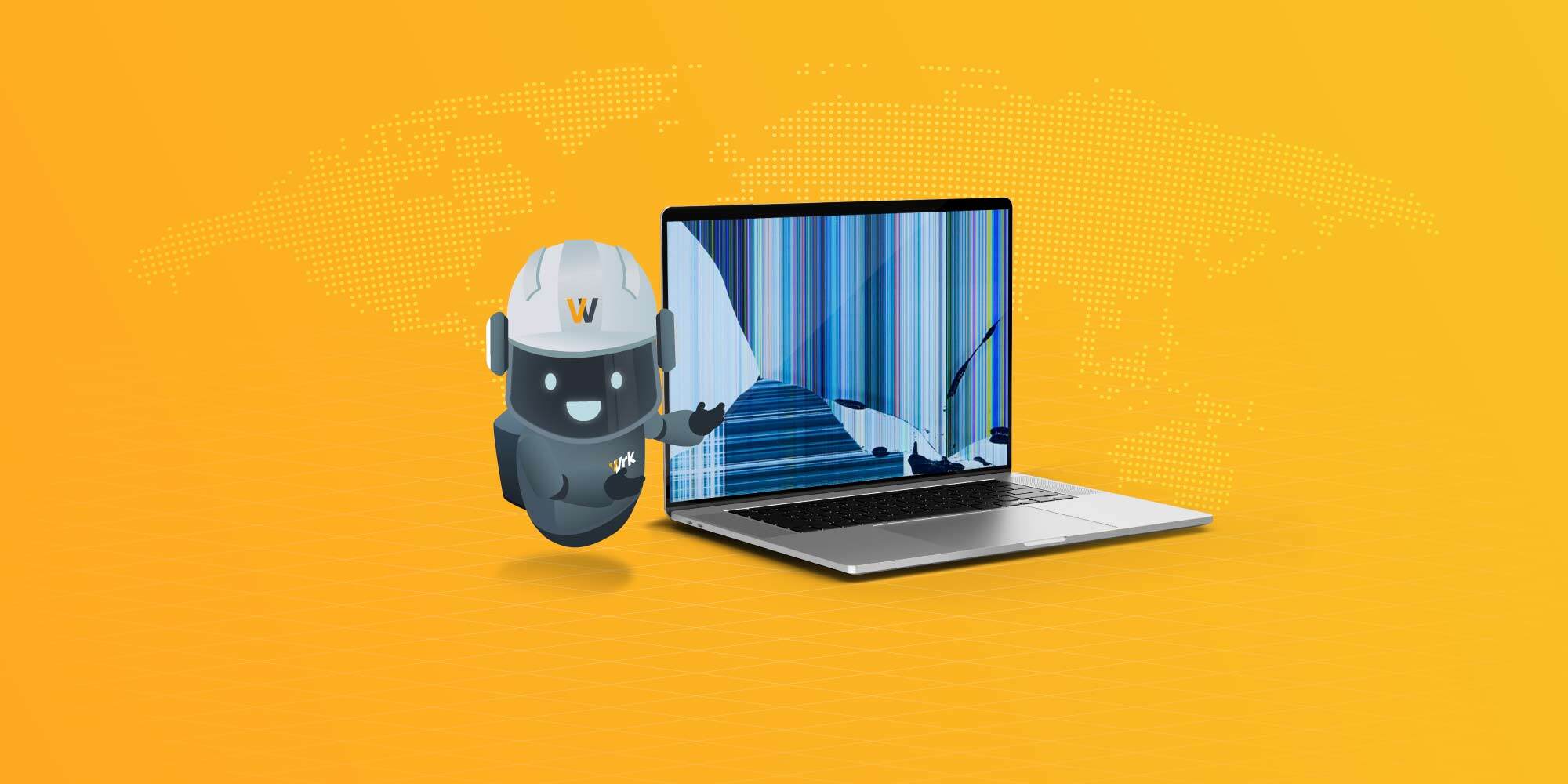Building a green IT procurement strategy for sustainable growth
 Zachary Trudeau
Zachary Trudeau
Every IT purchase, laptops, servers, cloud services, and network gear, carries an environmental footprint. Sustainable (green) procurement is a strategic way to source products and services that lower impact while supporting broader sustainability goals and CSR.
Multiple analyses show the supply chain, not day-to-day operations, drives most of a company’s footprint: roughly 80% of total GHG emissions and well over 90% of the air-pollution contribution tied to producing and distributing consumer goods. For IT leaders, prioritizing energy-efficient equipment, recycled materials, and responsible suppliers makes procurement a direct lever for emissions cuts and cost control.
Moving to green IT procurement strengthens brand credibility and supplier partnerships while setting measurable standards across the supply chain, from sourcing and energy use to end-of-life recovery. It’s a practical path to lower energy consumption, reduced risk, and clear progress against sustainability targets.
Key takeaways
-
Green procurement is a strategic approach that reduces environmental impact and supports long-term sustainability goals by prioritizing energy-efficient equipment, recycled materials, and responsible suppliers.
-
Sustainable supply chain management helps companies lower emissions, reduce energy consumption, and improve compliance while strengthening brand reputation and stakeholder trust.
-
Embedding sustainability into every stage of IT procurement, from sourcing to disposal, creates measurable environmental and business benefits while driving innovation across global operations.
What is green IT procurement?
.jpg?width=600&height=300&name=green%20it%20procurement%20(1).jpg)
Green procurement is the foundation of any sustainable procurement strategy. It focuses on making purchasing decisions that balance cost, performance, and environmental impact. For IT leaders, this means sourcing products and services that support sustainability goals while reducing waste and emissions.
Here’s what defines green procurement in practice:
-
Prioritize sustainability over short-term cost: Evaluate the total cost of ownership, including energy consumption, maintenance, and end-of-life recycling.
-
Choose energy-efficient and eco-friendly products: Opt for Energy Star–certified or energy-efficient equipment that reduces power use and carbon emissions.
-
Source sustainable materials: Select recycled materials and non-toxic components that minimize environmental impact and improve workplace safety.
-
Avoid hazardous and toxic chemicals: Ensure that suppliers meet health and safety standards, using environmentally responsible manufacturing processes.
-
Engage suppliers with strong sustainability commitments: Collaborate with vendors who demonstrate transparent sustainability practices and align with your organization’s CSR objectives.
-
Encourage innovation and sustainable design: Support suppliers who invest in green products, renewable resources, and technology that promotes reduced energy consumption.
-
Leverage government and industry frameworks: Follow examples like the Dutch government, which promotes green procurement through sustainability-focused policies, energy-efficient standards, and responsible office supplies sourcing.
When implemented consistently, green procurement becomes a powerful tool for organizations to reduce their environmental footprint, strengthen supplier relationships, and demonstrate leadership in sustainability and corporate social responsibility.
Managing supply chains
.jpg?width=600&height=300&name=green%20it%20procurement%20(2).jpg)
A sustainable procurement strategy only works if the supply chain reflects the same values. Managing suppliers responsibly helps organizations reduce their environmental impact, improve compliance, and strengthen their commitment to sustainability goals.
Here’s how IT and operations leaders can make their supply chains more sustainable:
-
Engage suppliers early: Build long-term relationships with vendors that prioritize sustainability, fair labor, and human rights. Supplier engagement is key to ensuring shared accountability and progress.
-
Set clear standards and monitor compliance: Integrate environmental, health, and safety requirements into supplier contracts. Use digital procurement tools to track and monitor compliance with sustainability criteria.
-
Reduce energy consumption in logistics: Choose energy-efficient transportation and optimize shipping routes. Consolidating deliveries and sourcing locally can lower emissions, fuel costs, and energy use.
-
Promote recycled materials and eco-friendly packaging: Encourage suppliers to use recycled materials, eliminate toxic chemicals, and switch to biodegradable or recyclable packaging.
-
Adopt a circular approach: Extend the lifecycle of IT equipment through refurbishment, reuse, or certified recycling programs. This reduces waste and supports sustainable sourcing.
-
Assess risk and build resilience: Evaluate suppliers for exposure to environmental, regulatory, or geopolitical risks. Diversifying your supply base and tracking supply chain data helps maintain operational stability.
Implementing these green procurement practices helps companies reduce energy consumption, minimize environmental risks, and meet sustainability goals across global supply chains. When sustainability is built into every supplier relationship, it transforms procurement from a cost center into a driver of innovation and accountability.
Reducing energy consumption
.jpg?width=600&height=300&name=green%20it%20procurement%20(4).jpg)
Lowering energy consumption is one of the most direct and measurable ways to achieve sustainability goals through green IT procurement. Choosing energy-efficient equipment, optimizing operations, and engaging suppliers that prioritize efficiency all contribute to lower costs, reduced emissions, and improved environmental performance.
Here’s how companies can reduce energy use across procurement and operations:
-
Purchase energy-efficient equipment: Select Energy Star–certified laptops, monitors, servers, and network devices to minimize power consumption throughout the product lifecycle.
-
Modernize IT infrastructure: Transition from legacy hardware to cloud-based or virtualized systems that use shared resources and deliver better energy efficiency.
-
Monitor and optimize power usage: Implement tools that track and report energy consumption across data centers, offices, and remote devices to identify inefficiencies.
-
Adopt smart building technologies: Integrate automated lighting, climate control, and occupancy sensors to lower energy waste in offices and shared spaces.
-
Engage suppliers with energy reduction programs: Work with vendors who actively improve their manufacturing and logistics processes to reduce GHG emissions.
-
Encourage sustainable employee behavior: Promote practices like shutting down equipment after hours and using low-power modes for office supplies and devices.
-
Measure results and reinvest savings: Track reductions in energy costs and carbon emissions and reinvest in additional sustainable technologies or recycled materials.
Organizations that make energy reduction a core procurement priority not only lower environmental impact but also strengthen resilience, reduce operational costs, and demonstrate measurable progress toward long-term sustainability commitments.
Implementing sustainable sourcing
.jpg?width=600&height=300&name=green%20it%20procurement%20(5).jpg)
Implementing sustainable sourcing is the next step in turning green procurement goals into measurable action. It ensures that every supplier, vendor, and contract aligns with your organization’s sustainability goals, helping reduce environmental impact across the entire supply chain.
Here’s how to build a strong sustainable sourcing strategy:
-
Establish clear sustainability criteria: Define expectations for environmental compliance, use of recycled materials, and avoidance of toxic chemicals in all products and services.
-
Engage and evaluate suppliers: Work closely with suppliers to review sustainability reports, verify certifications, and ensure alignment with your organization’s CSR objectives.
-
Incorporate sustainability into procurement processes: Include sustainability metrics and emission reduction goals in RFPs, contracts, and vendor assessments.
-
Invest in sustainable materials and technologies: Choose eco-friendly products and energy-efficient equipment that minimize waste and extend asset lifecycles.
-
Promote transparency and compliance monitoring: Use procurement tools to monitor compliance with sustainability standards and encourage data-driven decision-making.
-
Support local and ethical sourcing: Partner with vendors that support human rights, local economies, and fair labor practices while minimizing transportation-related emissions.
-
Foster innovation through supplier collaboration: Encourage suppliers to develop new green products, adopt cleaner processes, and invest in sustainable technologies.
-
Communicate results to stakeholders: Report progress on sustainability goals, energy consumption, and supply chain performance to build accountability and trust.
A well-structured sustainable sourcing program not only reduces environmental risks but also enhances supplier relationships, drives innovation, and reinforces a company’s role as a responsible leader in sustainable IT operations.
Benefits of green IT procurement
.jpg?width=600&height=300&name=green%20it%20procurement%20(3).jpg)
Adopting green IT procurement practices helps companies go beyond compliance, it creates tangible business, environmental, and social value. From reducing energy costs to enhancing brand reputation, sustainable procurement delivers measurable returns across the entire IT lifecycle.
| Benefit Category | Description | Impact on business |
|---|---|---|
| Cost efficiency | Investing in energy-efficient and durable equipment reduces total cost of ownership over time. | Lower energy consumption and maintenance costs. |
| Environmental responsibility | Reduces carbon emissions, promotes recycled materials, and minimizes toxic chemicals in production and packaging. | Supports sustainability goals and aligns with corporate ESG targets. |
| Brand reputation | Demonstrates visible commitment to sustainability and responsible sourcing. | Builds trust with customers, employees, and stakeholders. |
| Regulatory compliance | Meets global environmental standards and supply chain transparency requirements. | Avoids fines and improves risk management. |
| Innovation & market advantage | Encourages collaboration with suppliers developing eco-friendly products and cleaner technologies. | Differentiates brand as a sustainability leader in the IT market. |
| Employee engagement | Gives teams a sense of purpose and pride in contributing to sustainability outcomes. | Improves employee retention and supports CSR initiatives. |
| Supply chain resilience | Builds stronger partnerships with vendors that meet sustainability and human rights criteria. | Increases stability, reduces disruption, and enhances long-term resilience. |
Embracing green IT procurement helps organizations align financial performance with environmental and social responsibility. By integrating sustainability into everyday purchasing decisions, IT leaders can reduce risk, unlock innovation, and create long-term value that benefits both the business and the planet.
Challenges of green IT procurement
While the advantages of green IT procurement are clear, organizations often face practical challenges when trying to integrate sustainability into complex global operations. Understanding these barriers, and knowing how to address them, helps IT and procurement leaders create strategies that are both realistic and scalable.
Common challenges and how to overcome them
| Challenge | How to address it |
|---|---|
| Higher upfront costs for sustainable products | Evaluate the total cost of ownership rather than just purchase price. Energy-efficient equipment and longer product lifespans reduce costs over time. |
| Limited availability of certified sustainable suppliers | Expand sourcing networks to include vendors with clear sustainability goals, certifications, and transparent reporting. |
| Difficulty tracking sustainability performance | Use digital procurement platforms to monitor compliance, track emissions data, and verify supplier certifications in real time. |
| Inconsistent global standards | Align sourcing policies with internationally recognized frameworks like ISO 14001, Energy Star, and regional ESG requirements. |
| Resistance to change within procurement teams | Provide training and highlight how green procurement supports both CSR and business efficiency. Recognize teams for achieving sustainability milestones. |
| Balancing sustainability with business needs | Develop a strategic approach that integrates sustainability into standard procurement criteria—so decisions align with both cost and environmental impact. |
| Lack of internal visibility across supply chains | Increase supplier engagement, improve data sharing, and use compliance monitoring tools to build transparency and accountability. |
Why companies choose GroWrk for sustainable IT
Building a sustainable IT strategy doesn’t stop at purchasing eco-friendly equipment — it’s about managing every stage of the device lifecycle responsibly. That’s where GroWrk helps global teams transform their procurement, deployment, and recovery processes into a scalable, sustainable operation.
GroWrk supports organizations aiming to meet sustainability goals, reduce energy consumption, and maintain full visibility across global supply chains , without compromising efficiency or user experience.
Why GroWrk:
-
Global IT procurement at scale: Source energy-efficient devices and eco-friendly products through a centralized platform that supports sustainable purchasing decisions in over 150 countries.
-
Full lifecycle management: Manage devices from deployment to recovery, ensuring assets are reused, refurbished, or recycled in compliance with environmental standards.
-
Sustainable IT Asset Disposition (ITAD): Recover, repurpose, or recycle retired equipment securely and responsibly, helping reduce electronic waste and carbon footprint.
-
Sustainability reporting & compliance: Gain visibility into carbon impact, energy use, and vendor compliance to align IT operations with corporate CSR and ESG targets.
-
Localized warehousing & smart logistics: Reduce emissions and transportation costs with optimized distribution and regional inventory hubs.
-
Data-driven procurement insights: Track supplier engagement, compliance, and performance metrics to continuously improve sustainability outcomes.
-
Support for sustainable growth: Enable global teams to scale IT operations responsibly while maintaining transparency, security, and measurable environmental benefits.
- AI-Powered Customer Support & Dedicated Account Management: Access real-time updates, predictive insights, and AI-driven support backed by a personal account representative who ensures seamless coordination and faster response times.
With GroWrk, sustainability becomes a built-in part of IT operations, not an afterthought. By combining global reach with sustainable procurement practices, GroWrk empowers companies to innovate responsibly and lead the shift toward a more sustainable future for technology.
Request a demo today!
Frequently Asked Questions
What is green IT procurement?
Green IT procurement (or sustainable procurement) is the process of sourcing products and services that minimize environmental impact across their entire lifecycle — from production to disposal. It involves purchasing energy-efficient equipment, using recycled materials, and engaging suppliers that align with sustainability goals and CSR initiatives.
Why is sustainable procurement important for IT departments?
IT departments are responsible for a large share of a company’s energy consumption and equipment turnover. Implementing sustainable procurement practices helps reduce carbon emissions, improve supply chain transparency, and lower long-term operational costs, while demonstrating a clear commitment to sustainability.
How can companies make their supply chains more sustainable?
Companies can build sustainable supply chains by working with vendors who meet environmental standards, monitoring compliance, reducing energy consumption in logistics, and promoting recycled materials and eco-friendly packaging. Consistent supplier engagement ensures that sustainability is practiced at every stage of the procurement process.
What are examples of green products for IT procurement?
Examples include ENERGY STAR–certified laptops, low-power servers, refillable printers, and recycled office supplies. Sustainable options can also extend to cloud infrastructure powered by renewable energy and smart technologies that track and reduce energy usage.
How does GroWrk support sustainable IT procurement?
GroWrk helps companies implement green procurement strategies globally through:
-
Centralized sourcing of energy-efficient devices and sustainable products
-
Lifecycle management for responsible device recovery and reuse
-
ITAD services for secure, compliant e-waste recycling
-
Sustainability reporting to track and meet corporate ESG targets
-
Localized logistics to minimize transportation emissions
What role does supplier engagement play in green procurement?
Supplier engagement ensures that sustainability commitments extend beyond internal policies. By collaborating with suppliers who meet defined sustainability standards and use sustainable materials, companies strengthen their supply chain resilience and reduce environmental and reputational risks.
Can sustainable procurement also reduce costs?
Yes. While some green products may have higher upfront costs, they often deliver lower total cost of ownership through improved energy efficiency, longer lifespans, and reduced waste management expenses. Over time, sustainable sourcing helps companies achieve both cost savings and measurable environmental benefits.







